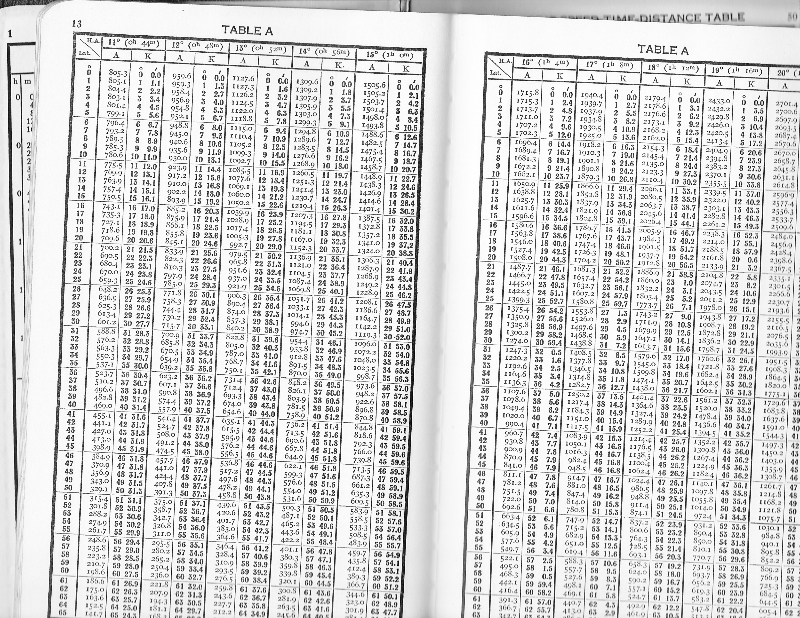
NavList:
A Community Devoted to the Preservation and Practice of Celestial Navigation and Other Methods of Traditional Wayfinding
Re: LHA and Meridian Angles
From: Gary LaPook
Date: 2015 Apr 3, 00:45 +0000
From: Bob Goethe <NoReply_Goethe@fer3.com>
To: garylapook@pacbell.net
Sent: Thursday, April 2, 2015 3:31 PM
Subject: [NavList] LHA and Meridian Angles
From: Gary LaPook
Date: 2015 Apr 3, 00:45 +0000
"Angle t" came from "time" when it was measured in units of time. It is also called H.A, "hour angle" in many tables. Many of the sight reduction tables used time units and measure both east and west since the trig values stay the same.
LHA was just a standard way to deal with GHA using the same calculations each time and didn't become standard until after World War 2. The tables that preceded H.O. 249, H.O 214, published in the 1930s and 40s used H.A. . If you want to use "angle t" or "hour angle, H.A.," then do it and always use the right hand column in HO 249. See attached page from Weems "Line of Position Book" 1928 ed.
gl
.
.
From: Bob Goethe <NoReply_Goethe@fer3.com>
To: garylapook@pacbell.net
Sent: Thursday, April 2, 2015 3:31 PM
Subject: [NavList] LHA and Meridian Angles
What is the rationale behind the use of LHA in sight reduction rather than the meridian angle, per se? I am presuming there is either a logical or historical rationale, but can't imagine what it would be.
If you are taking a sextant sight and the GP is on a meridian 45° east of you, then the meridian angle is 45°E. It seems like it is merely adding another step to turn this into LHA 315°. I know this step only takes another 3 or 4 seconds to perform. I can't understand just why the navigational world considers this worthwhile.
If one uses MA without converting to LHA, then in Pub. 249, he invariably uses the LHA angles along the left margin. But clearly, Pub. 249 is designed on the assumption that its users will be using LHA and not the meridian angle, per se. Everyone will be using right-hand column for morning sights of the sun, and the left hand column for afternoon sights.
--------------------------------------
As an aside, the meridian angle seems to show up in diagrams labelled at "t". Is the use of "t" one of those arbitrary historical choices that mathematicians made, or did Marc St. Hilaire use it as a snappy acronym of some French word?
As an aside, the meridian angle seems to show up in diagrams labelled at "t". Is the use of "t" one of those arbitrary historical choices that mathematicians made, or did Marc St. Hilaire use it as a snappy acronym of some French word?
Thanks,
Bob







